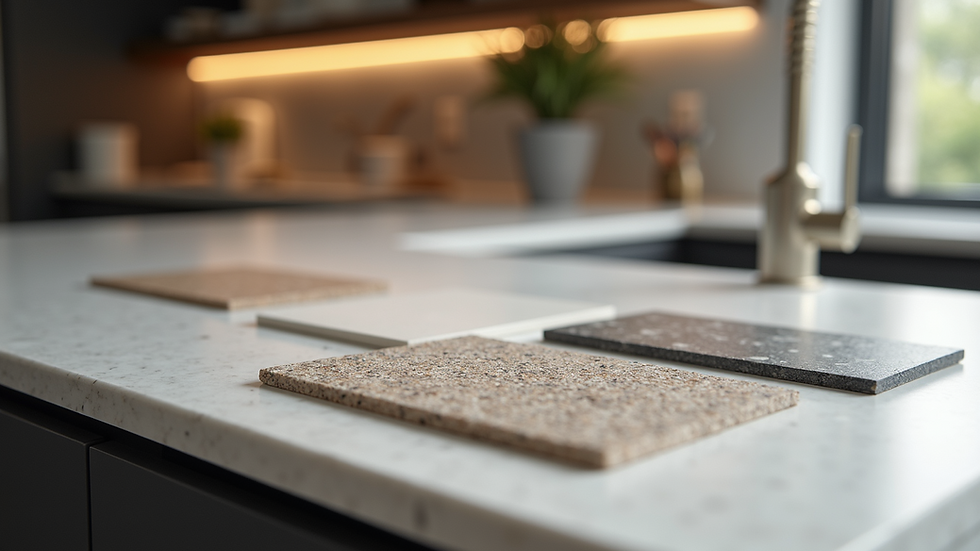Top Strategies for Successful Home Remodeling
- John Mack Renzi
- Aug 8
- 4 min read
Embarking on a home renovation journey can feel like stepping into a maze without a map. But fear not! With the right strategies, your remodeling project can be a smooth, even enjoyable, adventure. Whether you’re dreaming of a sleek kitchen upgrade or a cozy living room makeover, these top tips will help you navigate the process with confidence and a sprinkle of humor.
Essential Remodeling Tips for Homeowners
Before you pick up that hammer or start scrolling through Pinterest boards, it’s crucial to lay a solid foundation for your project. Here are some practical tips to keep your remodeling on track:
Plan Thoroughly: Sketch out your ideas, list your must-haves, and prioritize them. This helps avoid costly changes mid-project.
Research Contractors: Don’t just go with the first name you find. Check reviews, ask for references.
Understand Permits: Some projects require permits. Check with your local building department to avoid fines or delays.
Set Realistic Timelines: Remodeling often takes longer than expected. Build in some buffer time to keep stress levels low.
Prepare for Disruption: Remodeling can turn your home upside down. Plan for temporary living arrangements or designate a “safe zone” in your house.
Partner with a contractor who emphasizes maintaining a safe environment in your home by utilizing HEPA air machines, airborne dust extractors, dust barriers, and other methods to control foreign particles. who also takes pride in keeping your home clean and stress-free throughout the process.
By following these tips, you’ll be better equipped to handle surprises and keep your project moving forward.

How much should I budget for a home remodel?
Budgeting is the backbone of any successful remodeling project. Without a clear budget, you risk overspending or cutting corners. Here’s how to approach it:
Research Average Costs: Costs can vary significantly based on your project scope. For instance, a kitchen remodel could cost anywhere from $75,000 to $150,000 or more.
Include a Contingency Fund: Allocate at least 10-20% of your budget for unforeseen expenses such as hidden water damage or electrical problems.
Get Detailed Proposal: Request a detailed proposal from the contractor to see exactly how your money will be spent.
Working with a professional renovation company can lead to costs exceeding initial expectations, as they ensure quality workmanship. A seemingly low initial price might overlook finer details, which could result in additional expenses during the project.
Prioritize Spending: Concentrate on high-impact areas that enhance value and improve your daily life.
A contractor who does not provide free estimates and has established a design and preliminary planning process with an associated fee will typically be 100% accurate. This is because they will concentrate fully on your project to ensure all details are addressed. This phase usually involves a fee because achieving accuracy takes considerable time, given the many details involved in a renovation project.
Remember, a well-planned budget helps you avoid the dreaded “sticker shock” and keeps your project financially healthy.

Choosing the Right Materials and Finishes
Selecting materials can be overwhelming with so many options available. Here’s how to make smart choices that balance style, durability, and cost:
Consider Longevity: Opt for materials that stand the test of time, especially in high-traffic areas. For example, quartz countertops resist stains and scratches better than laminate.
Match Your Lifestyle: If you have kids or pets, choose easy-to-clean surfaces and durable flooring.
Think About Maintenance: Some finishes require regular upkeep. If you want low maintenance, avoid high-gloss paints or delicate tiles.
Stay on Trend, But Don’t Overdo It: Incorporate current styles in small doses to keep your home looking fresh without becoming dated quickly.
Sample Before Committing: Always test paint colors and materials in your space to see how they look in different lighting.
By carefully selecting materials, you’ll create a beautiful space that lasts and feels just right for you.

Tips for Hiring and Working with Contractors
Your contractor is your remodeling partner, so choosing the right one is key. Here’s how to make the relationship work:
Interview Several Contractors: Avoid choosing a contractor until you feel the connection is right. Compare their experience and communication style.
Check Credentials: Verify licenses, insurance, and certifications.
Get Everything in Writing: Contracts should detail scope, timeline, payment schedule, and warranty.
Communicate Regularly: Schedule check-ins to discuss progress and address concerns.
Be Flexible but Firm: Remodeling can throw curveballs. Stay open to solutions but keep your priorities clear.
Good communication and clear expectations can turn a stressful project into a collaborative success.
Maximizing Your Space with Smart Design Choices
Sometimes, remodeling isn’t about adding square footage but making the most of what you have. Here are some design hacks to maximize your space:
Open Floor Plans: Knock down non-load-bearing walls to create a more spacious feel.
Built-in Storage: Use shelves, cabinets, and nooks to reduce clutter.
Light Colors and Mirrors: Brighten rooms and create the illusion of more space.
Multi-Functional Furniture: Think fold-out tables or beds with storage underneath.
Outdoor Extensions: Decks and patios can expand your living area without major construction.
Smart design can transform your home into a more functional and inviting space.
Embarking on a home remodeling project is a big step, but with these strategies, you’re well on your way to creating a home that’s both beautiful and practical. Remember, patience and planning are your best friends. Happy remodeling!





Comments